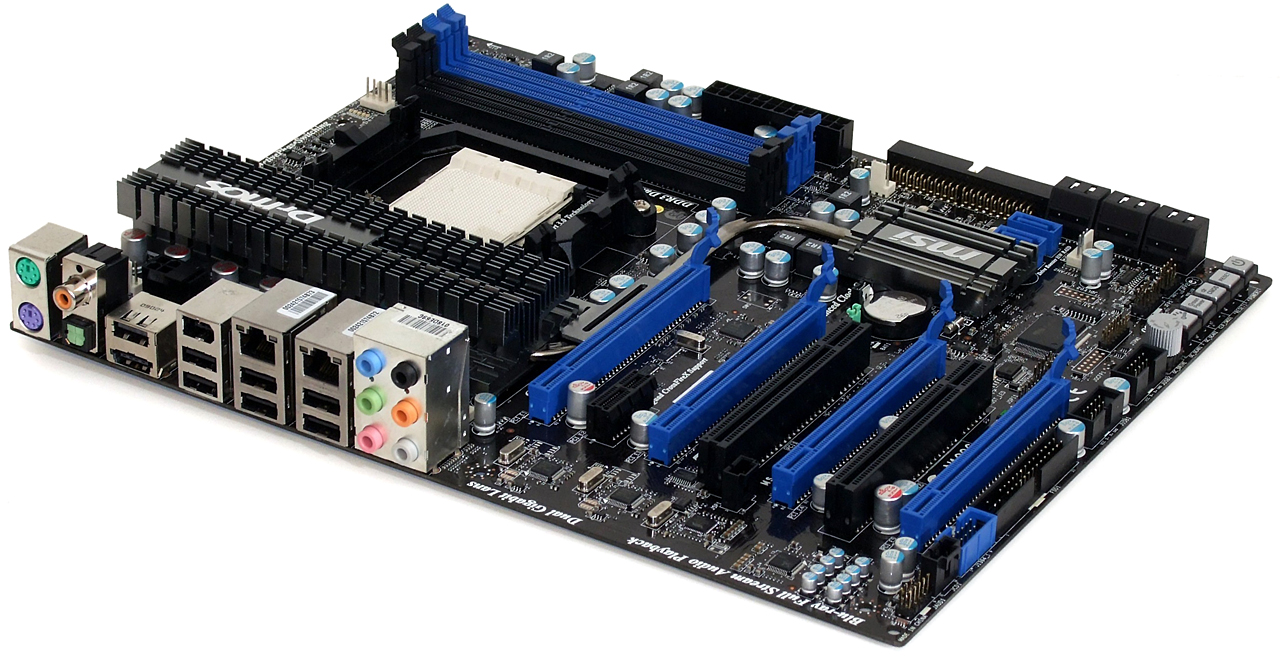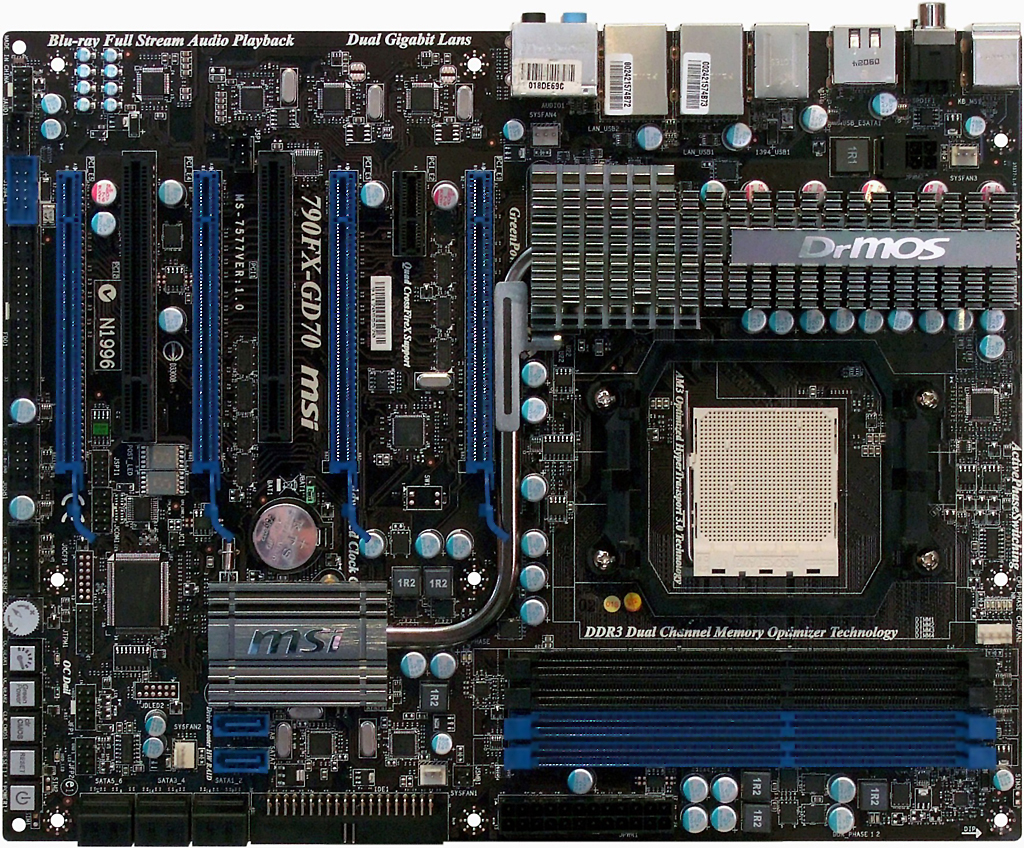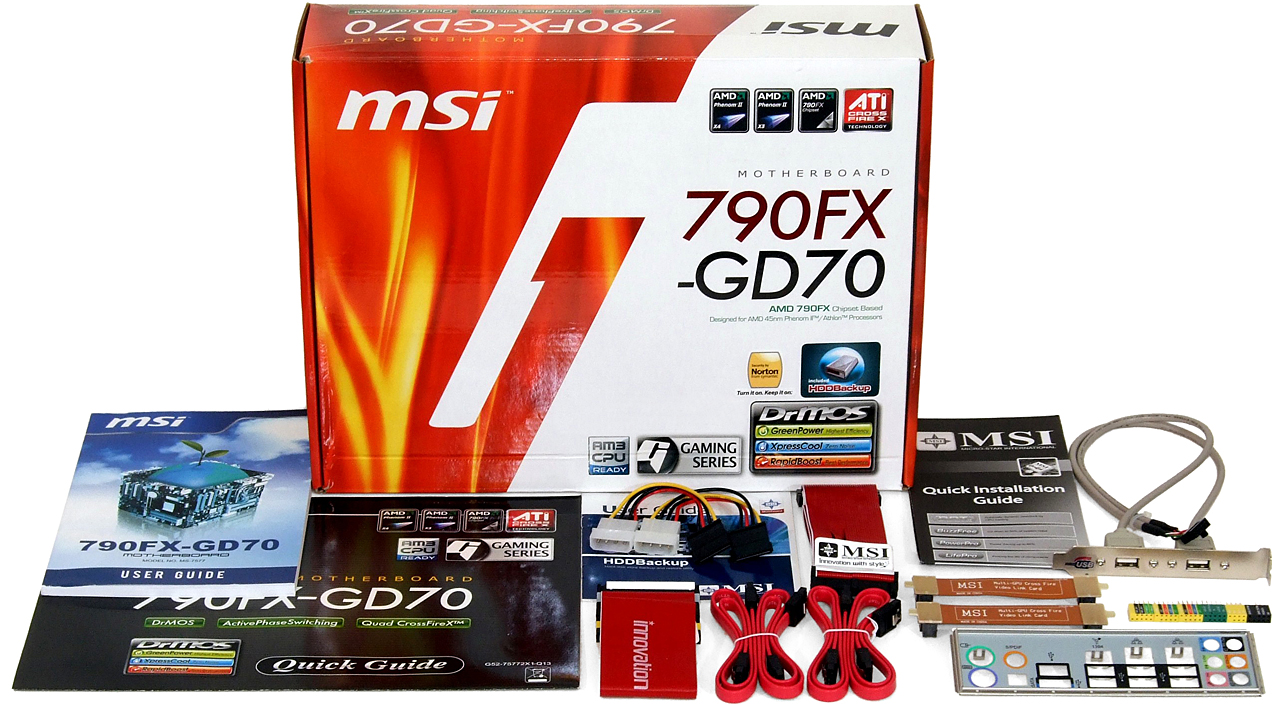Roundup: Four 790FX Socket AM3 Motherboards
MSI 790FX-GD70
Features and Layout
MSI’s 790FX-GD70 is the only motherboard in today’s review to properly support up to four double-thick graphics cards, so long as the case in which it is mounted has adequate space beneath the motherboard’s bottom edge. Thus, this model perfectly follows AMD’s original “Spider Platform” concept while updating several components.
MSI gets our vote as the most feature-packed 790FX Socket AM3 motherboard, and the added features might even provide better value. Flexible graphics support gives it an edge over the similarly-priced Gigabyte model, while the more-expensive Asus competitor comes up one network and three SATA ports short. Yet we’re certain some buyers who already have their hearts set on the Gigabyte model will counter that two PCIe x16 slots are enough, since the four-GPU limit of CrossFireX can be reached with two Radeon HD 4870 X2 graphics cards.
It’s still important to remember that the 790FX northbridge supports only two x16 cards to begin with, as MSI uses electronic switches to change from dual x16 to quad x8 pathways based on card detection. Yet, bandwidth-doubling PCIe 2.0 mode makes x8 mode more than adequate for any single-GPU card, and using “only” two dual-GPU cards will allow the board to return those two slots to x16 mode.
Located next to the power and reset buttons on the motherboard’s bottom edge, a round knob labeled “OC Dial” allows overclocking on the fly without resorting to a software utility. A BIOS setting enables it and also allows users to choose how far each “click” will push the base clock.
A Port 80 diagnostics display goes unnoticed beneath the forward edge of the 790FX-GD70’s third PCIe x16 slot, where it would be covered by nearly any secondary graphics card. That’s unfortunate because it might be really handy in deciphering which component has reached its limit for anyone who turns the OC Dial too far.
Two (blue) SATA ports operate through a port multiplier on a single SATA pathway. The parent controller also adds an eSATA port to its bandwidth-limited PCIe x1 interface. Placing a long double-thick graphics card in the second x16-length slot will at least partially block access to these ports, but we probably wouldn’t use them anyway.
Get Tom's Hardware's best news and in-depth reviews, straight to your inbox.
Connectors along the bottom edge are even more difficult to use. Issues begin at the bottom-rear corner with front-panel audio and FireWire headers that are a difficult reach for the cables of upper-bay jacks, followed by a floppy header that’s so far away from the external bay of most mid-tower cases that builders can only hope the cable will reach after being folded under the board.
BIOS
A comparison chart of voltage and frequency settings can be found in this article’s overclocking comparison.
MSI Cell Menu opens to basic clock management and MSI’s new OC Dial mode settings. Scrolling down reveals voltage controls.
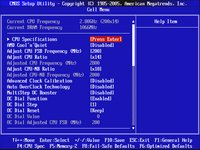
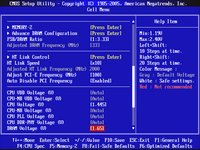
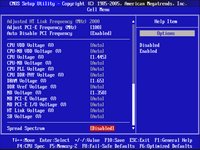
The 790FX-GD70 Advanced DRAM submenu has the greatest number of settings we’ve seen in a Phenom II motherboard. Users who are unfamiliar with a setting or otherwise feel it's not worth altering will be pleased to find automatic mode for individual timings.
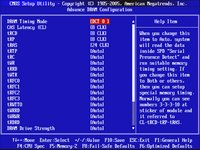
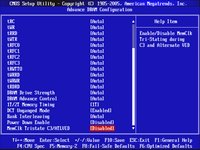
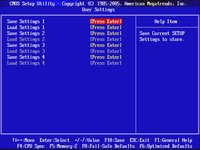
The 790FX-GD70 stores up to four custom BIOS configurations as user profiles.
Accessories
Two CrossFire bridges plus a quick-connector kit add to the basic installation package and MSI even includes a floppy cable as a favor to Windows XP users. Included but not shown are the motherboard driver and HDD Backup utility DVDs.
-
NitroSuperSonic AMD Phenom II X3 720 Black EditionReply
(2.80 GHz, 86.0 MB Cache)
I never knew any AMD processors had that much cache! -
judeh101 NitroSuperSonicAMD Phenom II X3 720 Black Edition(2.80 GHz, 86.0 MB Cache)I never knew any AMD processors had that much cache!Reply
Super CPU! -
ifko_pifko "Asus has clear performance leadership,..." :-)))Reply
1.66% better than the worst performer in the tests. :-) -
tacoslave who said Phenom II has low cache size i think with those 86mb you can do amazing things!!Reply -
tacoslave sorry about the double post but i would have liked to have seen these benchmarked with two 4870x2's... since they keep talking about them so much.Reply -
cangelini Super CPU fixed ;)Reply
Not much point in throwing that much GPU horsepower at a motherboard review; the card Thomas used is our current reference--and it's more than ample for showcasing the differences between these boards.
If you want to see quad-CrossFire for any specific reason, feel free to let us know and we can put together a story idea! -
EQPlayer I think people would like to see a dual-295/dual-4870x2 series of benches if only for the "OMG BEASTLY!" factor. I dunno. XDReply -
Crashman ifko_pifko"Asus has clear performance leadership,..." :-)))1.66% better than the worst performer in the tests. :-)Reply
Consistent would have been better if not for the fear of people pointing out ever tiny inconsistency. Just remember, if you're 5'11" tall it's clear to just about everyone that you're not 6'!!! -
Proximon cangelini...the card Thomas used is our current reference--and it's more than ample for showcasing the differences between these boards.Reply
Could you clarify that a bit Chris? Are you saying you would not expect any difference in crossfire between the MBs? If so, that's OK. However, if there's going to be a difference, that is the main reason to buy a 790FX. If you aren't going to crossfire might as well get a GX.
I suspect the chipset isn't the whole story and the various manufacturers could still screw up the PCI-E voltages or something :p
